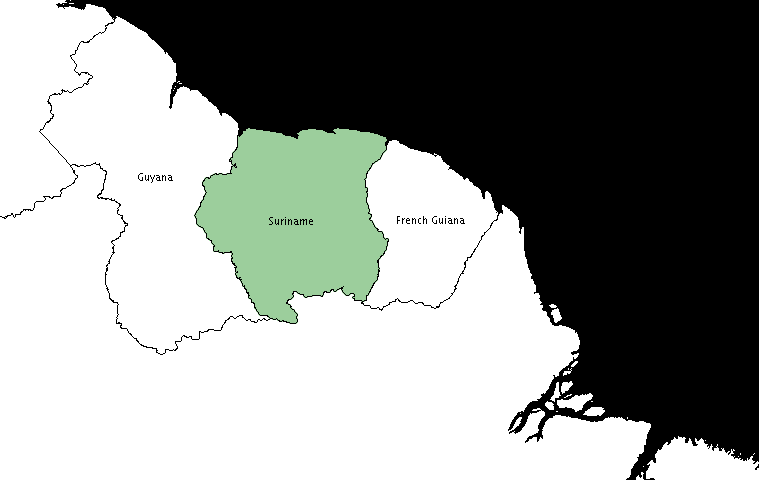


SURINAME

Indigenous Resurgence in the Contemporary Caribbean: Amerindian Survival and Revival. Edited by Maximilian C. Forte. Published by Peter Lang, New York, 2006
Contributor: Fergus MacKay is a human rights lawyer trained at the California Western School of Law. He is an expert in indigenous rights and has written a number of books and articles on the subject. He has worked as an attorney for indigenous peoples in Alaska. As legal adviser to the World Council of Indigenous Peoples, he worked with indigenous organizations throughout the Americas and the Pacific and was actively involved in the development of the draft United Nations Declaration on the Rights of Indigenous Peoples, the draft Organization of American States Declaration on the Rights of Indigenous Peoples and other international standard-setting exercises pertaining to indigenous peoples. He presently acts as Coordinator of the Three Guyanas Programme, working with indigenous and tribal peoples in Guyana, Suriname and French Guiana, and Coordinator of the Human Rights and Legal Programme of UK-based nongovernmental organization, the Forest Peoples Programme. He is also attorney of record in two cases involving Suriname Maroons before the Inter-American Court on Human Rights. Recent publications include, with E-R Kambel, De Rechten van Inheemse Volken en Marrons in Suriname (2003) and The Rights of Indigenous Peoples and Maroons in Suriname (1999). He has published for the International Work Group on Indigenous Affairs, in American University International Law Review, in Human Rights and the Environment: Conflicts and Norms in a Globalizing World, and in Cultural Survival Quarterly.
Chapter: Chapter Eight. Indigenous and Tribal Peoples in Suriname: A Human Rights Perspective
Abstract:
Suriname is a small former Dutch colony on the north-east coast of mainland South America. It is a member of CARICOM and according to historical and demographic factors is considered to be Caribbean rather than Latin American. Until recently, its substantial tropical rainforests, which cover at least 80 percent of the surface area of the country, were regarded as one of the best prospects for long term, sustainable use and conservation. These forests are the ancestral home of five distinct indigenous peoples comprising up to five percent of the population and six tribal peoples (known as Maroons) totaling between ten and fifteen percent of the population. In real numbers, this translates as approximately 20,000 indigenous people and 40-60,000 tribal people. Less than 30 years ago, Suriname was one of the most prosperous states in South America. A brutal military dictatorship, civil war, endemic corruption, declining prices for bauxite and the periodic suspension of Dutch aid money has left the country with serious economic problems. In an attempt to secure revenue to service foreign debt and stimulate economic recovery, Suriname has granted numerous concessions for gold, bauxite and timber that encompass close to 40 percent of the country’s land mass. Additionally, some 30,000 Brazilian garimpeiros have been licensed to mine by the state. In most cases, these concessions have been granted on lands traditionally occupied and used by indigenous and tribal peoples, provoking serious conflict and allegations of widespread human rights abuses. While Suriname claims that the concessions will provide desperately needed revenue, analyses of contracts for both logging and mining operations have revealed that the Surinamese treasury will receive few if any benefits and that the environment and indigenous and tribal peoples will suffer irreparable harm. Indigenous and tribal peoples, whose rights to their territories and resources are not recognized in Surinamese law, have vigorously condemned this invasion of their lands and territories. They have demanded that all existing concessions be suspended and that no more be issued until their rights are recognized in accordance with international human rights standards and enforceable guarantees are in place in Surinamese law. They have also begun to organize and proactively seek recognition and protection of their rights in various domestic and international fora.This article will provide an overview of the situation of indigenous and tribal peoples in Suriname and will analyze this situation from a human rights perspective and describe the measures that indigenous and tribal peoples have employed to seek recognition and protection of their rights. Particular attention will be paid to two cases involving Maroons presently pending before the Inter-American human rights system.
Websites on the Amerindians of Suriname:
The Indigenous Peoples of Suriname: Caribbean Amerindian Centrelink